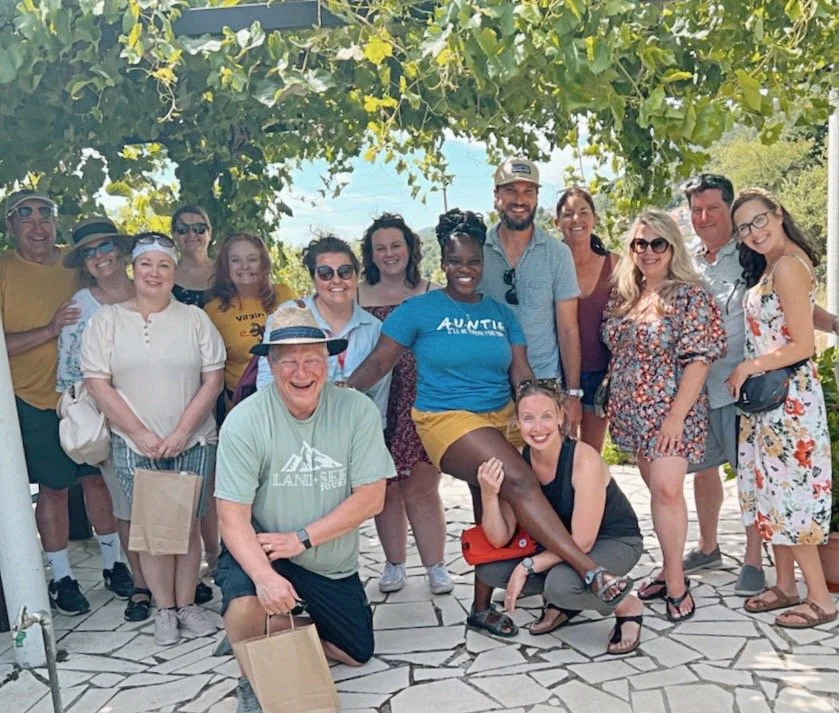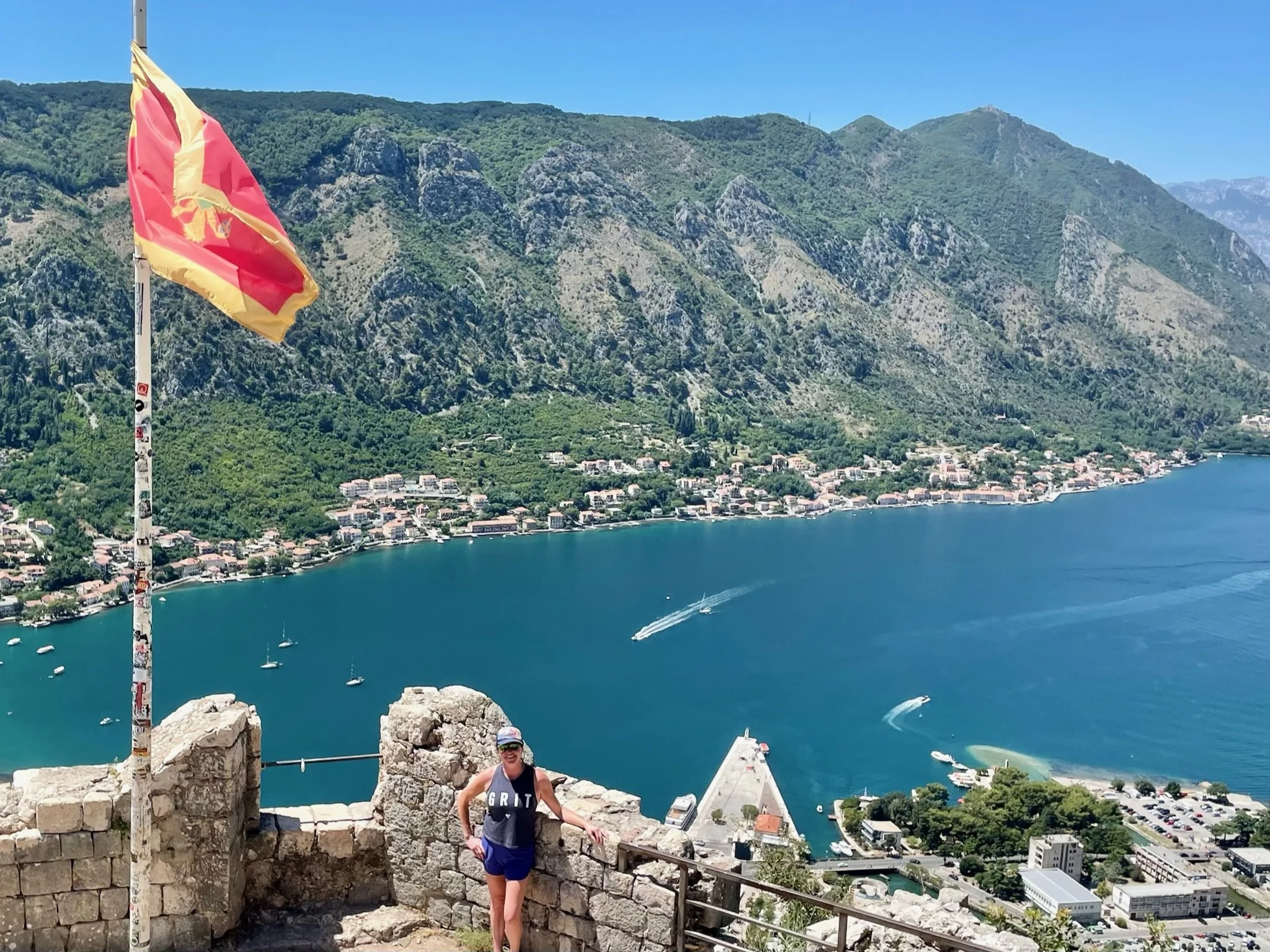I’m still pinching myself in disbelief that such an amazing week is humanly possible. The Balkans remain at the top of my list of places to travel. I’m torn between shouting from the rooftops that you must run as fast as you can to the breathtaking Dalmatian coastline and keeping it close to the chest as my own little hidden gem that remains mostly unspoiled. Although it seems reckless, it feels selfish not to share, so here it goes…
Split, Croatia
We started and ended our journey in Split, Croatia—a beautiful waterfront town that has a rich history, dating back to Roman rule in the 4th century AD. The impressive structure, Diocletian’s Palace, remains as a nod to it’s former glory.
Most of us were completely wiped out from our journey, but we did manage to sneak in a delicious wine tasting before dinner. We also sampled the locally-brewed Rakia, which one traveler jokingly noted resembled Mountain Dew—the taste, however, is quite different.
We ended the night on the rooftop bar of our hotel which has arguably one of the most beautiful views of the city skyline.
Mostar, Bosnia + Herzegovina
From there we traveled by bus to Mostar, in Bosnia and Herzegovina. We were instantly taken by the remnants that stand as an ever-present reminder that the Yugoslav Wars were quite recent—bullet holes lining walls and buildings and shells of building frames stand as a looming ghost of it’s bleak past.
The local shop keepers and vendors however, are bustling with the recent tourism boom after covid. The town is a time capsule— a juxtaposition between past, present and future.
We had a lovely, but honest walking tour with our host, Sheva, who shared Mostar’s complex history with us. His personal experience during the war was moving and candid and gave us tremendous insight into the realities of war on innocent children—fishing with grenades, rigging makeshift bicycles to get electricity, and complicated blurred lines between family, friend and enemy. He was a shining example of the resilience, forgiveness and hope that the human spirit is capable of.
As a local diver himself, Sheva was able to give us insight into Mostar’s famous sport—diving from Stari Most and even arranged for us to meet one of the young diving recruits. The sport has gotten so famous that Red bull sponsors a a diving competition from Stari Most each year.
We ended our time with a Turkish coffee experience—learning all about the growing, harvesting, and brewing process. Even the non-coffee drinkers in the group were faced with a challenge to their coffee biases.
Ston, Croatia
From Mostar, we returned to Croatia by way of Ston—a local salt-producing village surrounded by immense stone walls known for it’s unrivaled oysters. The sea is saltier in this region than most places and it produces some of the best Oysters in the entire world!
We also visited a family-run winery with our guide, Tonka, and learned about the different ways the local grapes can be harvested to produce countless different types of wine. We again encountered some locally-brewed Rakia and everyone left warmer and happier than they arrived.
On the ride to Dubrovnik, Tonka entertained us with stories from her days as an extra in the HBO hit series Game of Thrones. Needless to say, we were all very impressed to know village woman #20!
Dubrovnik, Croatia
In Dubrovnik we completely lost ourselves in the luxury of our hotel—most travelers even opted to skip dinner just to sit by the sea and watch the impressive sunset.
The next day, our local guide Tom took us through Dubrovnik and gave us both a fascinating history lesson and a private peek into some of the secret filming locations in Game of Thrones. Even those unfamiliar with the show were ready to go home and binge watch it after our afternoon with him. Together, we climbed the fortress and took in one of the most beautiful views Dubrovnik has to offer.
That evening we had dinner by the sea and watched as the most impressive moon rose over the Adriatic. It’s a night none of us will never forget.
Kotor, Montenegro
From Dubrovnik, we drove to Perast, Montenegro and hopped a boat to the man-made monastery Our Lady of the Rocks. Legend has it that local fishermen collected stones and slowly built the island over time. The locals still have a tradition of bringing a stone once a year to continue their work of expanding the island.
Our boat driver took us from the monastery straight to the dock at our hotel, and many of us felt like James Bond as we rode through the waves.
We headed into Kotor’s Old Town that afternoon for some shopping, cat museums, hiking, and so much gelato, before returning back to our beautiful hotel to swim, risk our lives paddle boarding (special thanks to Speedo Steve for saving one of us from getting tangled up in a rope) and taking in the breathtaking scenery.
Lokrum Island, Croatia
The next day brought us back to Dubrovnik for an afternoon exploring the island of Lokrum. We ate, pet peacocks, jumped off of cliffs, and sat on the Iron Throne. It was an amazing way to spend the afternoon before heading to the highlight of the trip—dinner with Marija and Zlatko!
Our local Croatian hosts were kind enough to have us over for the most amazing dinner of our lives. Zlatko and Marija cooked a literal feast of peka for us in the traditional way—slowly cooking over hot coals in an iron bell. We tasted Zlatkos home-brewed rakia, and ate proscuitto straight from the source!
Split, Croatia
The next day had us heading back to Split to say farewell to Croatia, but first many of us chose to stop at the kitschy, Froggyland museum—the lifeswork of an eccentric early 20th century taxidermy artist and easily the best $10 I’ve ever spent!
We ended our tour with an amazing dinner and found ourselves again at the rooftop bar for a final cheers and a quick laugh at some funny things that had been said along the way. All in all the trip was a dream—the destination, the hospitality, and the friendships we made were hard to beat!














































